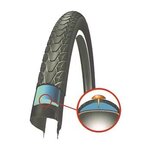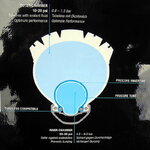Mike leroy
Active Member
What safety features are essential to rely on an ebike for daily commuting?
Like Matthew McConaughey says in a YouTube car commercial:
"It is not about hugging trees. It is not about being wasteful either. You got to find balance. When you take care of yourself, you take care of more than yourself. That is the sweet spot". Another YouTube version on the same theme.
I want to make the transition from gas-powered to electric transportation. Quite frankly, I feel intimidated by car traffic. I want to minimize the risk of accidents due to ebike disadvantages relative to car drivers.
I want to remain as active as possible. I found my primary reason for inactivity is the convenience of the automobile. Why drive a big car to carry a small bag of groceries? Did you know Julius Ceasar forbade wheeled traffic in Rome during the daytime? The population of Rome was 1M during Ceasar's reign.
The purpose of this first post may seem confusing. I am trying to build a Wikipedia-like Table of Contents in the first post. The TOC links jump to Topics inside this thread. Each post is intended to represent a separate topic, not a response to the original thread.
My situation:
Why make such a radical lifestyle change? I lost seventy-five(75) pounds by running/carrying food back from the store. As part of physical therapy from a Taekwondoe sparring accident, I needed to strengthen the split(not torn) meniscus in my knee.
I could not walk for two weeks. I returned to 75% after six weeks of painful PT. I am six feet tall. 195 is my optimal active weight. After a long period of inactivity, I weighed 245. My weight now fluctuates +- 10 lbs from 175.
I am underweight. Gaining weight is difficult. I wish I had bought a digital scale, before my weight went into uncontrollable free fall.
Like Matthew McConaughey says in a YouTube car commercial:
"It is not about hugging trees. It is not about being wasteful either. You got to find balance. When you take care of yourself, you take care of more than yourself. That is the sweet spot". Another YouTube version on the same theme.
I want to make the transition from gas-powered to electric transportation. Quite frankly, I feel intimidated by car traffic. I want to minimize the risk of accidents due to ebike disadvantages relative to car drivers.
I want to remain as active as possible. I found my primary reason for inactivity is the convenience of the automobile. Why drive a big car to carry a small bag of groceries? Did you know Julius Ceasar forbade wheeled traffic in Rome during the daytime? The population of Rome was 1M during Ceasar's reign.
The purpose of this first post may seem confusing. I am trying to build a Wikipedia-like Table of Contents in the first post. The TOC links jump to Topics inside this thread. Each post is intended to represent a separate topic, not a response to the original thread.
- Tire and tube standards for robustness.
- Cooling System and Overheating
- Brakes
- Torque per Grade Percentage
- Motor Features
- Trailer vs. Racks
- Helmets
- Insurance
- Placeholder for future concerns
My situation:
- I must ride in 35mph car lane for 1-2 miles.
- The downhill grade is 10%, so coasting speed can be 40-60mph.
- Uphill is the same, so I need at least wobble speed(i.e., 9mph) from the motor. I cannot be distracted by balance or waste energy from lateral pedaling movement.
- I would ride during low traffic hours, e.g., before 7am. A bus with bike racks is my fallback alternative for unexpected heavy traffic, injury, road construction or weather.
Why make such a radical lifestyle change? I lost seventy-five(75) pounds by running/carrying food back from the store. As part of physical therapy from a Taekwondoe sparring accident, I needed to strengthen the split(not torn) meniscus in my knee.
I could not walk for two weeks. I returned to 75% after six weeks of painful PT. I am six feet tall. 195 is my optimal active weight. After a long period of inactivity, I weighed 245. My weight now fluctuates +- 10 lbs from 175.
I am underweight. Gaining weight is difficult. I wish I had bought a digital scale, before my weight went into uncontrollable free fall.
Last edited:




